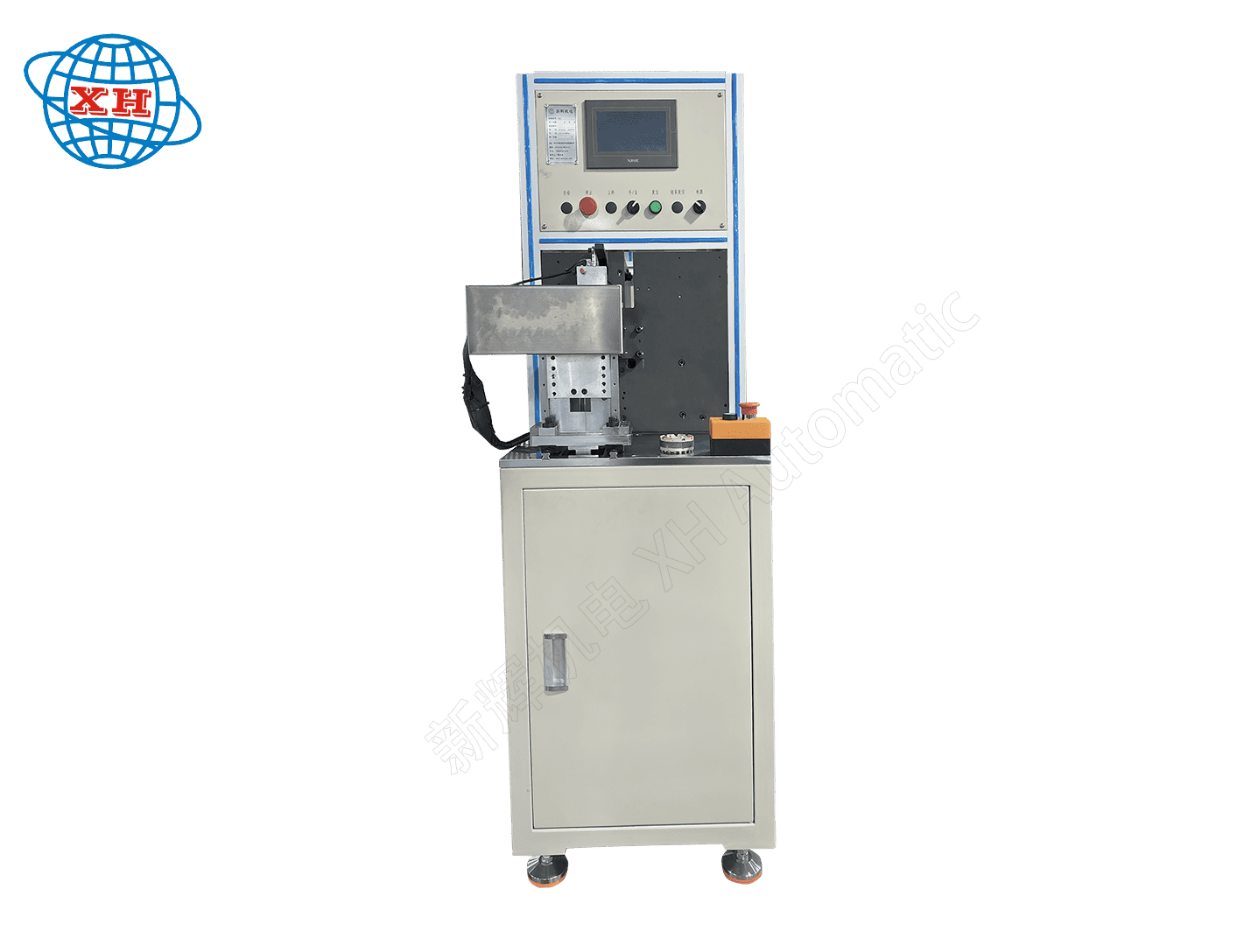Stator slot wedge machine is a kind of equipment specialized in automatic insertion of insulating paper at the bottom of stator slot, and its process flow and equipment characteristics are as follows:
1、Feeding:The insulating paper material in rolls is loaded onto the machine, ready to start the insertion process.
2、Feeding:The insulating paper is automatically fed into the machine through the feeding mechanism, which usually involves a servo motor-driven pressure wheel to control the feeding speed and position.
3、Folding: In the folding mechanism, the insulating paper is pressed by the pressure roller to make the required folds, forming a reinforcement to improve the firmness of the paper for subsequent conveying and positioning.
4、Indentation:Using the pressure roller and vice pressure roller to cooperate, the insulating paper is indented to form the required bending shape.
5、Flattening: The flattening roller and the vice flattening roller flatten the insulating paper after creasing to ensure that the paper is flat, which is convenient for subsequent cutting and molding.
6、cutting: through the cutting mechanism to cut the insulating paper into the required length, usually by the cutting knife to perform the cutting action.
7、Molding: The cut insulating paper enters the mold, and is pushed by the pusher to form the U-shape or other shapes of grooved paper with barbed structure at both ends.
8、Insertion: the molded slot paper is pushed by the pusher and automatically inserted into the slot of the rotor to form the insulation protection of the rotor slot.
9、Detecting and discharging: In the process of inserting, whether the slot paper is inserted correctly is detected by the inductive switch, and the machine stops the action automatically after completing the insertion.
10、Rotor rotation: In the multi-slot rotor, the rotor needs to rotate to the next slot position, ready for the next paper insertion.
11、 counting and control: the system has been inserted into the number of slots to count the number of paper, when the total number of slots to reach the rotor, the completion of the entire rotor paper insertion.
12、Abnormal Handling: If there is any problem in the process of paper insertion, such as exhaustion of insulating paper or bad bending, the system will issue an alarm and stop the operation.
13、Downloading:After completing all the paper insertion process, the insulating paper and rotor combination are sent out of the machine for subsequent winding or other processes.
In terms of equipment characteristics, the stator slot wedge machine has stable performance and high production efficiency, reaching the level of similar models. Feeding is controlled by servo motor, quick change of tooling, easy to operate, convenient and reliable, configured with chain line body to complete the unmanned automated production equipment.













